Table of Contents
Background
This past year, I spent a lot of my time investigating and researching student perceptions of composition projects that they were completing in their band class. This research was for my master’s field project but the entire process was incredibly enlightening and informative. The research showed many different things about student perceptions of their projects. The large themes will be outlined in this blog post but it will in no way share everything that was found and/or reported. I hope this post presents an overview of the information in a digestible, realistic way so the results can be applied to your classroom regardless of the level that you teach. I am going to “casually” intertwine my analysis and findings with discussion and opinions for this blog post which I realize is not typical of research. However, if you are interested in reading the entire paper where things are discussed in a more traditional manner, I am happy to send it to you. Feel free to reach out at [email protected].
My interest in creative activities and research really was an accident. Essentially, it came from years of people telling me to include creative activities in my classroom, being scared to do so, and then the eventual collapse of my will to avoid including these activities. Dr. Sarah Gulish was the straw that broke the camel’s back as I saw her present on her students’ creative work at a regional PMEA conference. From there, I started trying a few creative activities in my classroom based on what I had learned at the conference. I happened to mention this to Sarah and she investigated my classroom for a research project she was completing. Through a very kind heart, she showed me the ropes of research and brought me into the research side of the project that she was doing in my classroom. I was hooked.
A year later, I found myself needing a topic for my master’s field project. A band director happened to be doing a composition project with his students and I asked if I could investigate what they were doing for my project. He agreed and, eventually, I landed on the idea of investigating student perceptions of their composition project experience.
Before I began data collection, I reviewed many pieces of previously conducted research. I used the literature listed below as a reference point for this research with many other resources considered as I did my literature review. My literature review broke down into four large sections as shown below.
- The Role of Practicing Teachers and Creative Activities
-
- Kokotsaki, 2012; Kokotsaki & Newton, 2015; Shouldice, 2014; Taylor 2018; Wiggins, 1993
-
- Benefits to Students Who Engage in Creative Activities
-
- Gulish & Guarriello, 2019; Hogenes, Oers, Diekstra, & Sklad, 2015; Leung, 2008
-
- Implications of Informal Learning in Music Classrooms
-
- Abrahams, 2010; Green, 2005; Green, 2017; Vasil, 2019
-
- Other Work Accessed
- Biasutti, 2017; Giddings, 2013; Hickey, 2001; Kratus, 2016; Kratus, 2019
- NAfME Standards, National Core Arts Standards
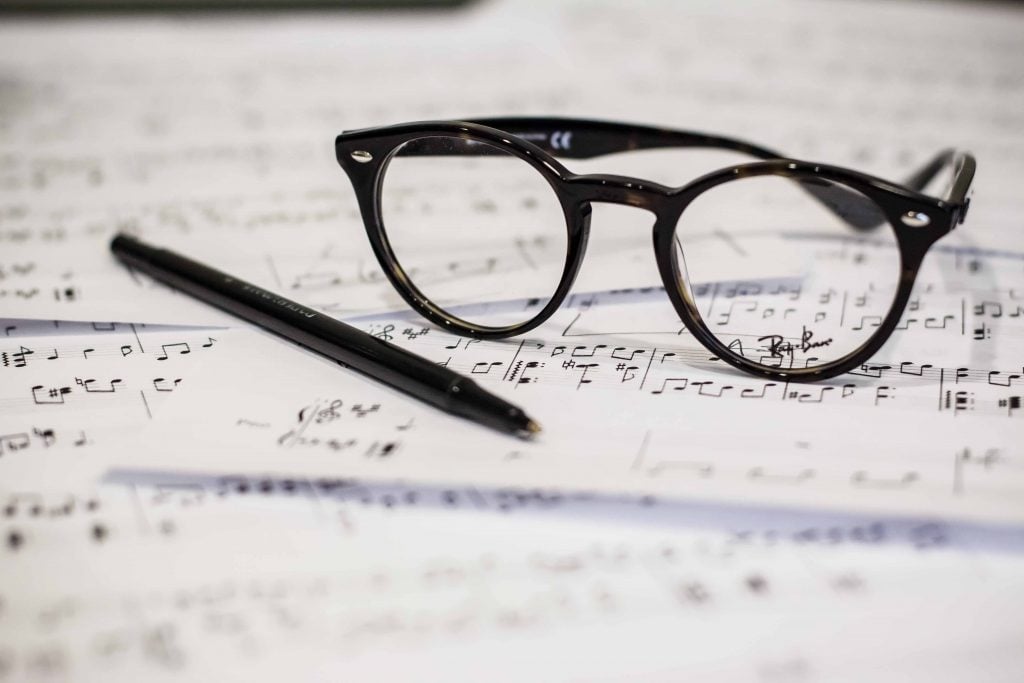 About the Project
About the Project
To frame the project, below is some information on the project and students:
The research was a Qualitative Intrinsic Case Study and the purpose of the study was to investigate student perceptions of composition activities in two different levels of secondary music ensembles. I had four main research questions:
- What are students’ current perceptions of their readiness for composing?
- What do students find valuable about completing a composit
- ion project in band class?
- In what ways are students’ experiences and attitudes about creating music similar to or different from their experiences and attitudes about playing previously composed music?
- In what ways are students’ perceptions of creative experiences similar and different between students in different ensembles?
The high school I was researching has a well respected music program by the community and it is well supported by the community and administration. Below are some other basic statistics about the school, the band program, and the band director at the time of this study in the spring of 2019.
High School Demographic Profile
- There are approx. 2,400 students in grades 9-12
- The school is 91% Caucasian
- The school has a 93% graduation rate
- It is a Fringe-Rural School District
- The definition of ‘fringe-rural’ is basically a school that is boarding between suburban and rural. There are parts of the school district that are very rural while other parts of the district that adhere very much to the definition of suburban.

- The definition of ‘fringe-rural’ is basically a school that is boarding between suburban and rural. There are parts of the school district that are very rural while other parts of the district that adhere very much to the definition of suburban.
Band Program Profile
- 60 students in Symphonic* Band, grades 10-12 (auditioned, upper level ensemble)
- I will use an asterisk next to Symphonic* Band as a reminder to readers that it is the auditioned ensemble throughout the post.
- 50 students in Concert Band, grades 9-12 (no audition required)
- Scheduling complications/ 6-day cycle
- Students in Concert Band can pair the class with other ensembles like choir or orchestra for 3 of the 6 days in a cycle while Symphonic* Band students must be in class all 6 days of a cycle.
- Various levels of performance
Teacher Background
- 8th year teaching band overall but 4th year at this high school
- Director of bands + electives (piano, guitar, music and media)
- Piloted Project- this was the first time he had tried this composition project
- He self-reported that he had very little composing experience
Project Information
Below is an outline of the project assignment itself. You can see a copy of what the students were given below as well.
- Intermittent assignment spanning spring semester
- Students worked on the project at various, often random moments throughout the semester. There was originally a set schedule but due to other events going on in the building such as last minute performances, testing, and snow days, the schedule was altered.
- Students reported sometimes only working on the project once a month and other times working on it multiple times in one week.
- Students composed in self-selected friendship groups
- Students were welcome to choose whom they worked with in small groups.
- This project was the first time composing for most students
- Some students reported a great deal of personal composition including a student who self-reported that he had written multiple orchestral symphonies. Other students reported that they do a great deal of improvisation, arranging, and orchestrating. Other students reported no involvement in any activity like this.
- Students could choose instruments even if non-traditional
- While students were welcome to use their band ensemble instrument, some students chose to switch instruments or use non-traditional instruments like electric guitars and basses.
- Submitting Assignments via Canvas
- Canvas is an online learning platform similar to Blackboard and other systems that allow the submission of assignments, test administration, etc.
- Teacher wanted to let the students experiment
- Original goal was a studio class style performance
- As a means to share their composition, the teacher originally planned for students to share their work in a studio class style performance at the end of the year. However, due to the lack of time, this did not end up happening.
Data Collection
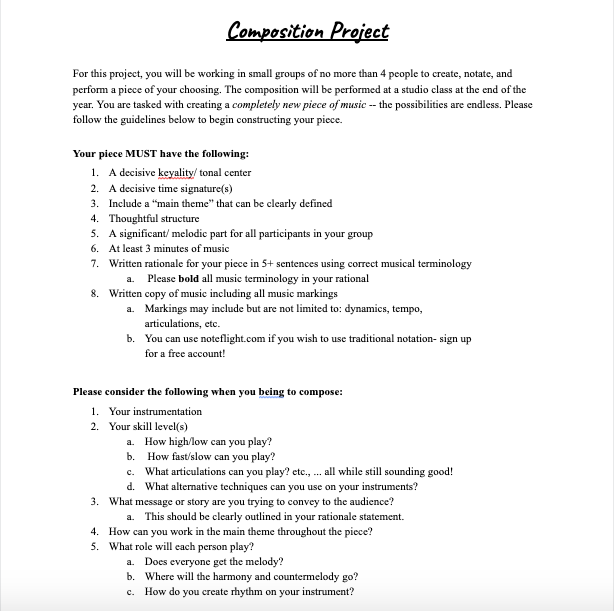
Data collection consisted of interviews with students, interviewing the director, observing students working on their projects in class, taking field notes, and collecting photos and videos. I then organized the data by band enrollment status (aka, was it data regarding Symphonic* or Concert Band?). I open coded the data for themes and then did an item analysis to answer my research questions.
Below is the participant profiles and how they were grouped by their self-chosen friendship groups.
| Concert Band Participant Profiles | |||||
| Name | Grade | Instrument | Private Lessons? | Reported Experience Composing & Improvising | Group |
| Evan | 10 | Percussion | Yes- on violin |
|
1 |
| Jacob | 9 | Electric Bass | No |
|
2 |
| Peter | 9 | Electric Guitar | No |
|
2 |
| Austin | 9 | Drum Set | No |
|
2 |
| Symphonic* Band Participant Profiles | |||||
| Name | Grade | Instrument | Private Lessons? | Reported Experience Composing & Improvising | Group |
| Owen | 12 | Trumpet | No |
|
3 |
| Gabe | 10 | Drum Set | Yes |
|
3 |
| Bobby | 11 | Keyboard | Yes |
|
3 |
| Harvey | 11 | Acoustic Bass | Yes |
|
3 |
| Nick | 10 | Alto Saxophone | Yes |
|
4 |
| Aaron | 11 | Alto Saxophone | Yes |
|
4 |
Analysis
Theme 1: Theory as composition
Students reported many statements that led me to find that they were struggling to separate music theory from composition. The teacher stated that he wanted the students to experiment and be free with their compositions. However, students seemed unable to separate the urge of wanting to be theoretically correct from being open and creative. The Symphonic* Band students were, essentially, creating rules for themselves that their teacher did not give them. Gabe said, “A lot of groups I found were struggling hard for you know… you know… can I sit on a second? Or a third? Do I want to sit on a sixth or a fifth? Like, they didn’t know. They had no clue how to go about actually composing.” This quote, and many others like it, led me to think that the students were of the belief that composing was the same as music theory. Many composers will tell you that is not the case (even though they have a vast knowledge of music theory). Another student said, “I plan to take the music theory class that Mr. [Macklin] provides just because … I always wanted to know music theory and I feel like it would have helped us to know a bit more … coming into this project.” This student expressed a desire to know more about music theory in general as they thought it would have been more helpful for the project as if knowing theory would have made the composition project easier.
Theme 2: The need for more time
This is a fairly unsurprising theme that plagues teachers everywhere. One huge comment that was brought up continuously in interviews with the students and director was the need for more time to adequately complete this project. Some students felt that the long periods in between when they were working on projects was of concern while others felt they simply needed more time in general. The following conversation was had in an interview with two Symphonic* Band students.
Bobby: “I feel like if … it’s expanded over a longer period of time, … that would help a lot of people take the stress off and learn more…”
Gabe: “It might even be like… we don’t need more time. We just need concentrated time instead of like, half the period here, half the period there.”
Expectations of the school and community still largely revolve around the successful completion of polished performances. These performances, in general, dictate how the music department is perceived, so the composition project took a back seat to performance preparations when the director felt it necessary. I believe this is a decision a large majority of music teachers would make, particularly at the secondary level. Successful performances secure support and, in many cases, funding. Spending a large amount of time on a piloted project that will ultimately not leave your room is not terribly lucrative for a performance based secondary music program. However, this leaves us with philosophical turmoil- what is best for our students? I don’t have a clear answer to that but that is (or should be) THE question in education and something to think about and reflect on as you plan for your students.
Item Analysis
The item analysis portion of this project came with some expected and unexpected results. First, I found that the Concert Band students were more willing to jump in with both feet, give the project a try with excitement and experiment along the way. Symphonic* Band students were not so willing. Symphonic* Band students expressed being hesitant despite having reported a significant amount of exposure to music theory, improvisation, and, in some cases, composition.
| Concert Band | Symphonic Band |
|
|
Austin, a Concert Band student said, “I felt prepared. I never took any music theory class or knew what music theory was. I just listened to a lot of rock and a lot of music so I listen to these really good bands and I can take stuff from them and figure it out for myself.” whereas Owen, a Symphonic* Band student said, “… I was excited to write something but I was hesitant to write something because I never had an experience like this before, … a mix of emotions I suppose.” The difference in enthusiasm didn’t come as much of a surprise. The Concert Band students are those who are not as advanced of players as those in Symphonic* Band. They don’t have as much experience with what is perceived to be “correct” by the traditional performing world whereas the Symphonic* Band students have a vast amount of exposure, help, and experience in what is considered to be the “proper” way to do things. Symphonic* Band students were more hesitant because they did not want to be incorrect whereas the Concert Band students didn’t have as much of an image of what was correct or incorrect.
While the finding was unsurprising, it was also a bit sad to have my suspicions confirmed as a teacher. We are often so busy teaching students what is “correct” that we aren’t allowing them to break the mold and think outside of the box. When we do let them think outside the box, they are scared and hesitant. I feel this speaks to our education system in general far beyond the music classroom. I’ve been told that this connection is overzealous but I truly believe this is a small example of the dangers of teaching to tests. We are teaching students how to be good test takers and find the right answer- we’re not teaching students how to be good thinkers and creative problem solvers but then get frustrated with them when they aren’t able to do tasks that require creative thinking or pose more than minimal difficulty.
Despite their hesitations, students in both groups reported finding value in the composition project. They are listed below.
Both Concert and Symphonic* Band
- Making Music in Small Groups
- Contrasting Musical Activities
- Creating Performable Pieces
- Working in free time/ at home
- Would like to do the project again
- Having Musical Freedom
- High Expectations for Self (intrinsic motivation)
Symphonic* Band only
- Increased communication skills
- Improved band rehearsals (pre-composed music)
Of the reported values above, three of the categories stuck out to me. It was interesting to see that students enjoyed making music in small groups and they found that they had increased communication skills. By working in small groups with friends, they were able to converse and discuss their thoughts about the music. Once they were performing the music, they were able to find ways to communicate while playing so they could properly execute their musical vision.
Additionally, students were showing that they were intrinsically motivated to complete the project to their liking. They were able to take ownership of their work and that allowed them to set high expectations. In many cases, students actually wrote music that was too difficult for their current playing abilities. They had to either revise their work to be playable or work harder to be able to perform what they had written. In either case, there was learning and benefits to their process.
Evan, a Concert Band student said, “I think that [the composition project] let’s you be creative and it [gives you] a different learning experience that you definitely wouldn’t get by just … practicing. Because, you make your own thing. … you see it in a whole different way and I think that helps you grow as a musician.”
However, when students were asked their attitudes about previously composed music compared to composing their own music, students had mixed feelings. Some students felt it was worth more to perform previously composed music or just enjoyed the act of performing previously composed music. Other students found that there was “intrinsic value” to creating their own music. Some students felt that composition was an academic exercise almost as if it were supplementary to the “real” experience of their band class. Students also reported that the environment in which they composed was just as important to them as the project itself. Some students said they would not enjoy the project if they were unable to pick their group mates. Others reported that they would not want a class solely focused on composition as they enjoyed the social aspect and camaraderie of band class.
Implications and Discussion
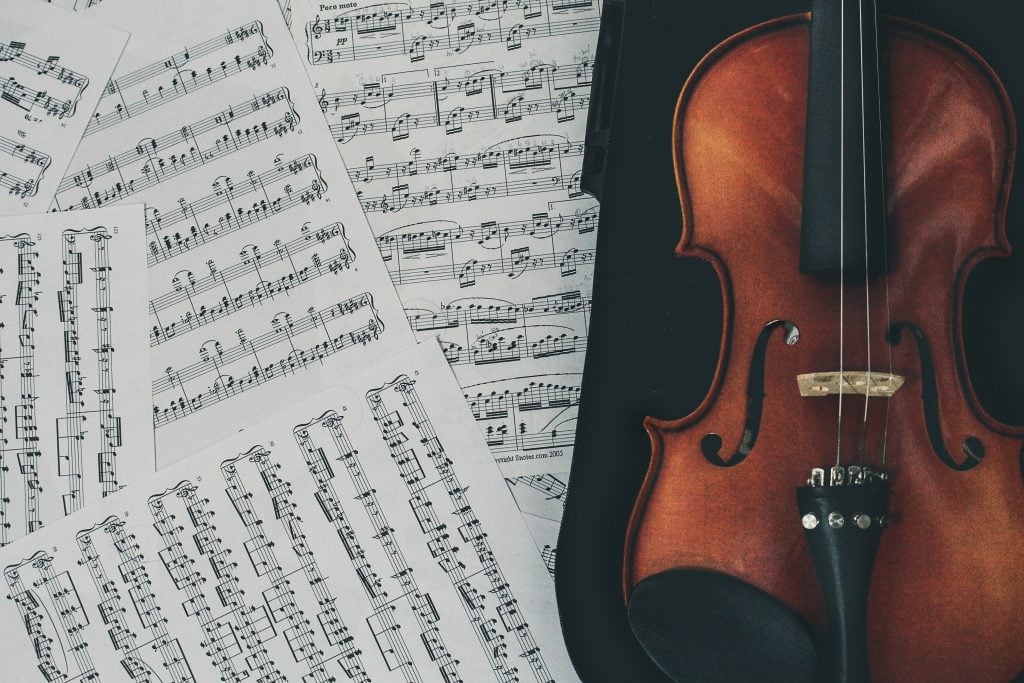 While the findings above are significantly trimmed down from the original paper for the purpose of this blog, this all still begs the question… so what? Well, I think there is a lot to be learned as a teacher from the students’ reported thoughts. First and foremost, I think it’s important to acknowledge that the teacher gave his students this opportunity. He was piloting a project with very little knowledge of the subject, decided to dedicate time to the project (even if it was a it sporadic), and he saw the project through, which did result in reported benefits. In my mind, this is lesson #1. We need teachers to say ‘yes!’ to creativity. Teachers need to incorporate it into their classrooms regardless of expectations, time restraints, or knowledge on the subject. Teachers need to be risk takers and see if they can learn along with their students! For better or worse, students only know what we show them. Thoughts regarding self-efficacy should not be part of the consideration when trying something new- just go for it! John Kratus presented at the 2019 Suncoast Conference in Tampa, Florida. His presentation included the following quote: “Like any fear we experience, the fear of student creativity is a learned behavior and, in time, can be overcome. But the long road from fear to embrace is not easily traversed, and some teachers may never make the journey.” I encourage you to embrace the unknown and make the journey- it’s worth it.
While the findings above are significantly trimmed down from the original paper for the purpose of this blog, this all still begs the question… so what? Well, I think there is a lot to be learned as a teacher from the students’ reported thoughts. First and foremost, I think it’s important to acknowledge that the teacher gave his students this opportunity. He was piloting a project with very little knowledge of the subject, decided to dedicate time to the project (even if it was a it sporadic), and he saw the project through, which did result in reported benefits. In my mind, this is lesson #1. We need teachers to say ‘yes!’ to creativity. Teachers need to incorporate it into their classrooms regardless of expectations, time restraints, or knowledge on the subject. Teachers need to be risk takers and see if they can learn along with their students! For better or worse, students only know what we show them. Thoughts regarding self-efficacy should not be part of the consideration when trying something new- just go for it! John Kratus presented at the 2019 Suncoast Conference in Tampa, Florida. His presentation included the following quote: “Like any fear we experience, the fear of student creativity is a learned behavior and, in time, can be overcome. But the long road from fear to embrace is not easily traversed, and some teachers may never make the journey.” I encourage you to embrace the unknown and make the journey- it’s worth it.
As you briefly read above, I genuinely feel that the students self-creating rules for themselves speaks to our education system on a much larger level. I think it’s important that teachers break away from the ‘teach to the test’ mindset in all subjects. I have a variety of opinions regarding grading, testing, competitions, and other very normal systematic elements of our education system that feed into my thoughts on this subject. However, I find it problematic that we teach hundreds of students how to do a specific task (performing music in this case) and very few students are curious about the inner workings of their assigned task. All they want is the satisfaction of “doing it right” as if there was truly such a thing in the world of the arts. I know we say there is a “right way”… but is there really? I think this need to be right that students feel is a problem we see in any number of subjects beyond music and the arts. We need a new generation of thinkers, innovators, problem solvers, and dreamers. We need to stop teaching students that their ultimate dream should be to earn As. The real world doesn’t give report cards or scores but it does need creative thinkers, collaborators, and people who can imagine possibilities beyond the constructed rules. It’s ok to let your students teach you something new- something that’s not on the test or written into the curriculum. Let’s give them the experience in the safety of our classrooms so they can continue to engineer new possibilities when they leave our schools.
Of course, I also believe there needs to be continued research in the area of creative activities in music classes- particularly at a secondary level where performance is king. The research also needs to be accessible and digestible to the community through cost and time-effective outlets which can be difficult. I encourage you to support and engage with companies and organizations that support access to practical, research driven information for teachers.
I hope this research has helped you gain some insight into student thoughts regarding composition. While it functioned as an intrinsic case study, I believe a lot of what was learned from these students can be applied elsewhere. If you wish to learn more or continue the conversation about creativity, feel free to reach out to me anytime! Happy creating!



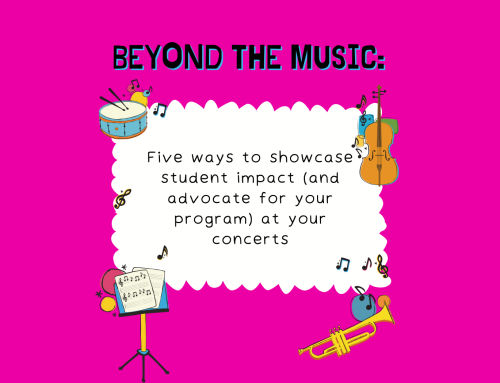
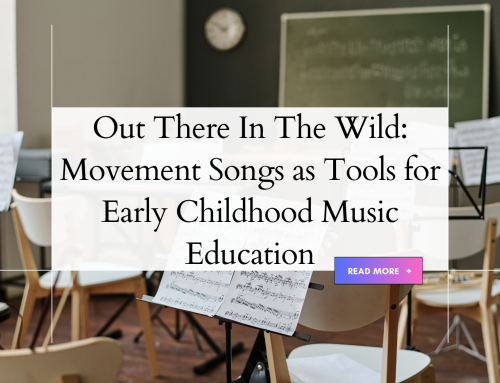
Leave A Comment